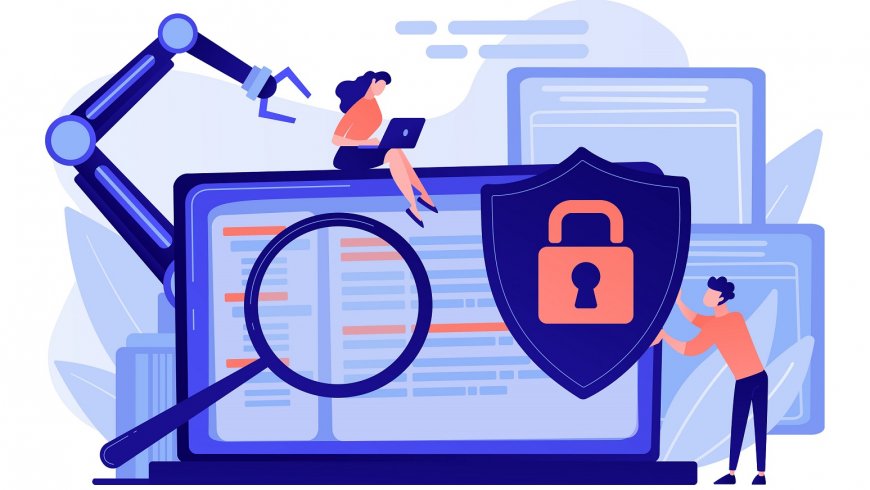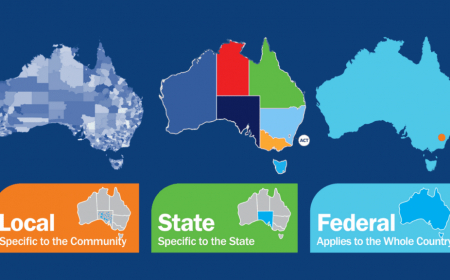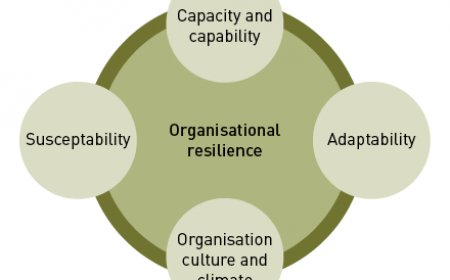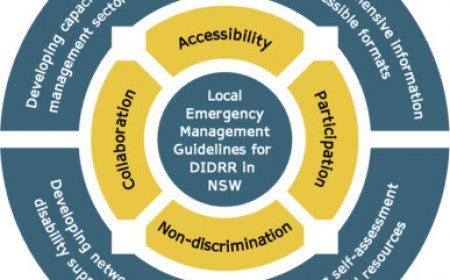Global Elections: Voting Technologies and Cybersecurity Risks
Discover how voting technologies are transforming global elections and learn about the cybersecurity risks they introduce. Explore strategies to protect electoral integrity and ensure secure, transparent, and accessible voting systems.

In an era defined by rapid technological advancement, the integration of voting technologies into electoral systems has revolutionized how elections are conducted. From electronic voting machines (EVMs) to blockchain-based systems, these innovations promise efficiency, transparency, and accessibility. However, they also introduce significant cybersecurity risks that threaten the integrity of democratic processes. This article examines the role of voting technologies in global elections, explores associated vulnerabilities, and discusses strategies to mitigate risks while safeguarding electoral integrity.
The Evolution of Voting Technologies
Voting technologies have evolved dramatically over the past few decades, transitioning from paper ballots to sophisticated digital systems. These advancements aim to address longstanding challenges such as voter fraud, logistical inefficiencies, and low turnout. The shift toward technology-driven solutions reflects a broader trend of modernizing governance to meet the demands of increasingly interconnected societies.
Types of Voting Technologies
-
Electronic Voting Machines (EVMs)
EVMs allow voters to cast ballots electronically, reducing manual counting errors and speeding up result tabulation. Widely used in countries like India and Brazil, they have streamlined large-scale elections. For instance, India’s deployment of EVMs across its vast electorate of over 900 million voters has significantly reduced delays in announcing results. -
Internet Voting
Internet voting enables citizens to participate remotely via secure online platforms. Estonia pioneered this approach, allowing voters to cast ballots from anywhere with internet access. Since 2005, Estonian citizens have been able to vote online in national elections, with participation rates steadily increasing. -
Blockchain-Based Systems
Blockchain technology offers tamper-proof ledgers for recording votes, ensuring transparency and immutability. While still experimental, it holds promise for combating fraud and enhancing trust. Pilot projects in countries like Switzerland and South Korea have explored blockchain’s potential to create verifiable and auditable election records. -
Mobile Voting Apps
Mobile apps like Voatz aim to increase accessibility for disabled or overseas voters. These applications leverage smartphone capabilities to authenticate users and transmit encrypted votes. However, their adoption remains controversial due to security concerns, as highlighted by incidents involving app vulnerabilities. -
Optical Scan Systems
These systems combine paper ballots with digital scanners, creating a hybrid model that balances convenience with verifiability. Voters mark paper ballots, which are then scanned and stored electronically. This dual-layer system provides a backup in case of disputes or technical failures. -
Biometric Voting Systems
Biometric technologies, such as fingerprint scanning and facial recognition, enhance voter identification processes. Countries like Nigeria and Afghanistan have implemented biometric systems to prevent duplicate registrations and impersonation.
Benefits of Voting Technologies
- Efficiency : Reduces time and resources required for ballot processing, enabling faster result announcements.
- Accessibility : Facilitates participation for marginalized groups, including those with disabilities, living abroad, or residing in remote areas.
- Transparency : Digital records can be audited to verify results, fostering accountability and public confidence.
- Scalability : Supports large populations and complex electoral systems, accommodating diverse voter demographics.
- Environmental Impact : Reduces reliance on paper, contributing to sustainability efforts.
"While voting technologies offer transformative potential, their implementation must prioritize security to prevent exploitation."
Cybersecurity Risks in Voting Technologies
Despite their advantages, voting technologies are vulnerable to cyberattacks, which pose existential threats to electoral integrity. Hackers, state-sponsored actors, and malicious insiders exploit weaknesses to manipulate outcomes, sow distrust, or disrupt processes. The interconnected nature of modern elections amplifies these risks, making robust cybersecurity measures essential.
Common Cybersecurity Threats
-
Hacking and Data Breaches
Attackers target databases containing voter registration information, potentially altering records or deleting entries to disenfranchise individuals. In 2016, Russian hackers infiltrated Illinois’ voter registration database, exposing personal data of thousands of voters. -
Malware Infections
Malicious software can compromise voting machines, altering vote counts or rendering them inoperable on election day. For example, researchers demonstrated how malware could manipulate results on certain EVM models without leaving traces. -
Denial-of-Service (DoS) Attacks
Overloading servers with traffic disrupts online voting platforms, preventing legitimate users from accessing services. Such attacks can delay elections or force cancellations, undermining public confidence. -
Phishing Scams
Fraudulent emails trick officials or voters into revealing sensitive credentials, granting attackers unauthorized access. During the 2020 U.S. election, phishing attempts targeted local election officials to gain control of critical systems. -
Supply Chain Vulnerabilities
Compromised hardware or software components during manufacturing introduce backdoors for exploitation. For instance, allegations surfaced that some EVMs used globally contained components sourced from untrusted suppliers. -
Insider Threats
Dishonest employees or contractors may abuse their privileges to tamper with systems or leak confidential data. Insider threats are particularly challenging to detect and mitigate. -
Deepfakes and Misinformation
Synthetic media and false narratives undermine confidence in results, even if no actual breach occurs. Deepfake videos purporting to show election rigging have circulated widely, fueling conspiracy theories. -
Man-in-the-Middle Attacks
Intercepting communication between voting devices and central servers allows attackers to alter transmitted data. This risk is especially acute for internet voting systems lacking end-to-end encryption.
Case Studies of Cybersecurity Incidents
-
United States (2016 Election) : Russian hackers infiltrated voter registration databases in multiple states, highlighting vulnerabilities in U.S. electoral infrastructure. Although no evidence of altered votes emerged, the incident underscored the need for enhanced security.
-
Ukraine (2014 Election) : A cyberattack disrupted Ukraine’s central election commission, temporarily halting result announcements. Hackers attempted to falsify preliminary results but were thwarted by manual backups.
-
Estonia (2017 Incident) : Although Estonia’s internet voting system remained secure, researchers identified theoretical flaws that could be exploited under certain conditions. This discovery prompted further investment in system hardening.
-
India (2019 General Election) : Allegations of EVM tampering sparked controversy, despite official assurances of their security. Critics called for greater transparency and independent audits.
Impact of Cybersecurity Risks on Global Elections
The consequences of cybersecurity breaches extend beyond individual incidents, affecting public trust, political stability, and international relations.
1. Erosion of Trust
When voters perceive elections as compromised, faith in democratic institutions diminishes. Even unsubstantiated claims of hacking can fuel skepticism and polarization. For example, repeated allegations of voter fraud in the U.S. have deepened partisan divides.
2. Political Instability
Manipulated results or widespread disruptions spark protests, violence, or calls for annulments. Kenya’s 2017 election rerun followed allegations of interference, exacerbating tensions and leading to unrest.
3. Foreign Interference
State-sponsored cyber operations seek to influence outcomes, destabilize adversaries, or gain geopolitical leverage. The 2016 U.S. election interference scandal demonstrated the global implications of such tactics, prompting calls for international norms governing election security.
4. Legal Challenges
Contested results often lead to protracted legal battles, straining judicial systems and delaying governance transitions. Recounts and investigations divert attention from pressing policy issues, hindering effective governance.
5. Economic Costs
Addressing cybersecurity breaches involves significant financial outlays, including forensic investigations, system upgrades, and public relations campaigns to restore confidence. These costs strain already limited electoral budgets.
Strategies for Mitigating Cybersecurity Risks
To protect voting technologies from cyber threats, governments and stakeholders must adopt comprehensive measures that balance innovation with security. Collaboration among policymakers, technologists, and civil society is crucial to building resilient electoral systems.
1. Implementing Robust Security Protocols
- Use end-to-end encryption to safeguard data transmission, ensuring that votes remain confidential and tamper-proof.
- Regularly update software and patch vulnerabilities to prevent exploits. Outdated systems are prime targets for attackers.
- Conduct penetration testing to identify and address weak points before malicious actors can exploit them.
2. Ensuring Transparency and Accountability
- Provide verifiable paper trails for all electronic votes to enable audits. Hybrid systems combining digital and paper elements offer a fail-safe mechanism.
- Publish detailed post-election reports outlining system performance and incident responses. Transparency builds public trust and deters misinformation.
3. Strengthening Voter Authentication
- Require multi-factor authentication for online voting platforms, combining passwords with biometric verification or one-time codes.
- Verify identities using biometric data, such as fingerprints or facial recognition, to prevent impersonation and duplicate voting.
4. Enhancing International Cooperation
- Share threat intelligence and best practices among nations to combat cross-border attacks. Organizations like the United Nations and International Institute for Democracy and Electoral Assistance (IDEA) facilitate knowledge exchange.
- Collaborate with tech companies to develop secure solutions tailored to electoral needs. Partnerships with firms like Microsoft and Google have yielded promising tools for detecting and mitigating threats.
5. Educating Stakeholders
- Train election officials, IT staff, and volunteers on cybersecurity awareness and incident response. Human error remains a leading cause of breaches.
- Inform voters about safe practices, such as recognizing phishing attempts and securing personal devices used for voting.
6. Investing in Research and Development
- Fund projects exploring emerging technologies like quantum cryptography and AI-driven anomaly detection. These innovations could revolutionize election security.
- Pilot new systems in controlled environments before full-scale deployment. Testing ensures reliability and identifies unforeseen risks.
7. Establishing Regulatory Frameworks
- Enact laws mandating minimum security standards for voting technologies. Regulations should cover hardware, software, and operational procedures.
- Create independent oversight bodies to monitor compliance and investigate breaches. These entities ensure accountability and impartiality.
Global Perspectives on Voting Technologies and Cybersecurity
Different regions face unique challenges and opportunities in adopting voting technologies, shaped by technological readiness, regulatory frameworks, and societal attitudes.
North America: Balancing Innovation with Security
The U.S. and Canada grapple with balancing modernization efforts against persistent vulnerabilities. While both countries invest heavily in securing infrastructure, legacy systems remain susceptible to attacks. The U.S. Department of Homeland Security has designated election systems as critical infrastructure, underscoring their importance.
Europe: Emphasizing Transparency and Regulation
European nations prioritize stringent regulations, such as the EU’s General Data Protection Regulation (GDPR), to protect voter data. Estonia’s success with internet voting serves as a benchmark for others considering similar initiatives. However, debates continue over whether universal adoption is feasible given varying levels of digital literacy.
Asia: Rapid Adoption Amidst Skepticism
Countries like India and South Korea embrace EVMs and optical scan systems, citing improved efficiency. However, critics raise concerns about lack of transparency and susceptibility to tampering. Public pressure has pushed authorities to introduce additional safeguards, such as voter-verifiable paper audit trails (VVPAT).
Africa: Bridging the Digital Divide
Limited internet penetration and electricity shortages hinder widespread adoption of advanced technologies. Paper-based systems remain dominant, though pilot programs explore mobile voting for remote areas. Initiatives like Kenya’s Huduma Namba project aim to digitize voter registration and improve accuracy.
Latin America: Combating Corruption and Fraud
Brazil’s use of EVMs has largely eliminated traditional forms of fraud but faces ongoing scrutiny over potential vulnerabilities. Regional cooperation focuses on sharing expertise and resources to enhance resilience. Argentina and Colombia have experimented with blockchain pilots to address transparency concerns.
Conclusion: Safeguarding Democracy in the Digital Age
Voting technologies hold immense potential to transform elections, making them more efficient, inclusive, and transparent. However, without robust cybersecurity measures, these innovations risk undermining the very foundations of democracy. By prioritizing security, fostering collaboration, and educating stakeholders, societies can harness the benefits of technology while protecting electoral integrity. As the world becomes increasingly interconnected, safeguarding elections from cyber threats is not just a technical challenge—it is a moral imperative.
FAQs
-
What are voting technologies?
- Tools like electronic voting machines, internet voting platforms, and blockchain systems designed to modernize elections.
-
Why are voting technologies important?
- They improve efficiency, accessibility, and transparency, addressing longstanding challenges in electoral processes.
-
What are common cybersecurity risks in voting technologies?
- Hacking, malware infections, denial-of-service attacks, phishing scams, and insider threats.
-
How do cyberattacks affect elections?
- They erode trust, cause political instability, enable foreign interference, and trigger legal disputes.
-
Which countries have faced cybersecurity incidents in elections?
- Examples include the U.S. (2016), Ukraine (2014), and Kenya (2017).
-
Can blockchain ensure secure voting?
- Blockchain offers tamper-proof records but requires rigorous testing and safeguards to address scalability and usability concerns.
-
What steps can governments take to secure voting technologies?
- Implement robust protocols, ensure transparency, strengthen authentication, enhance cooperation, educate stakeholders, and invest in R&D.
-
Is internet voting safe?
- It depends on implementation; current systems face significant risks but may become viable with advancements in security.
-
How does misinformation impact voting technologies?
- False narratives about breaches or vulnerabilities undermine public confidence, even if no actual attack occurs.
-
What is the future of voting technologies?
- Continued evolution will focus on balancing innovation with security, leveraging AI, quantum computing, and decentralized systems.
What's Your Reaction?
 Like
0
Like
0
 Dislike
0
Dislike
0
 Love
0
Love
0
 Funny
0
Funny
0
 Angry
0
Angry
0
 Sad
0
Sad
0
 Wow
0
Wow
0











































